Do you want to improve your influencer outreach for roundup posts?
Wondering how to come up with a unique topic idea?
In this article, you’ll discover a four-step plan to create effective influencer roundups.
How to Create Influencer Roundups: Tips and Tools for Bloggers by Ann Smarty on Social Media Examiner.
#1: Plan a Timeline for Your Roundup
Timing is everything. If you plan your influencer-driven content in time for the upcoming holidays, you’ll get a number of benefits including:
- A better response from influencers: When the timing is right, people will be more willing to talk about the upcoming event or holiday.
- More shares: People will search for new ideas for upcoming holidays, so catch their attention by giving them insights from multiple experts.
- Easier planning: If holidays and events direct your content roadmap, you’ll be more in control of your future content plans.
The first step is to plan how you’ll integrate your influencer-powered content into your overall content roadmap. Here’s an example of my own content roadmap that includes big national holidays, professional days, weird/funny holidays, and annual industry events.
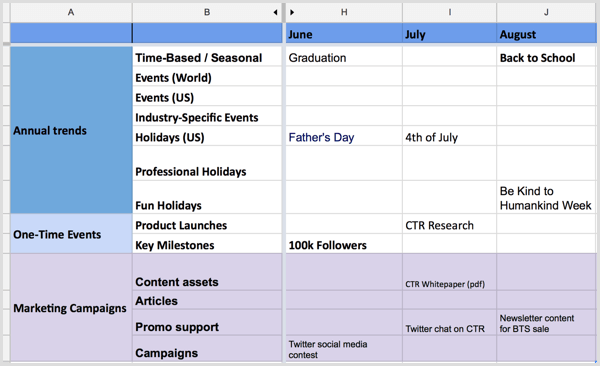
Notice how upcoming events inspire and direct my project ideas.
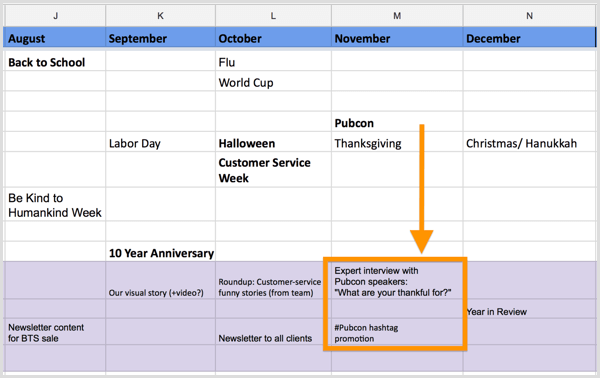
You can download a sample content marketing roadmap here.
To produce your influencer-powered content, you need to plan it months in advance. Start with the outreach and allocate enough time to put the roundup together, create visuals, and so on.
To determine the actual date when the piece needs to go live, use a tool like Google Trends. For instance, if you search for “pubcon” using the 2016 filter, you can see that interest spiked about a week prior to the event (which was held October 10-13, 2016), so that would be a good day to push the Publish button.
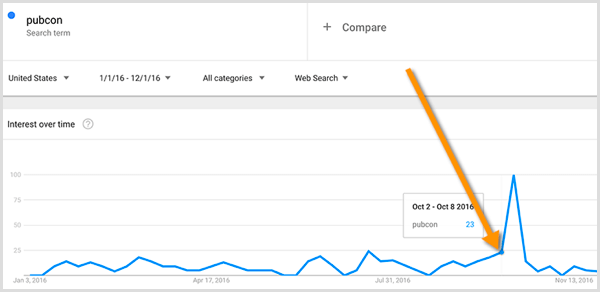
Here’s how you might time your content creation process, based on the above example:
August 1: Come up with the questionto ask influencers. What will be the main topic of your roundup? (See the next section for tips on choosing a topic.)
August 7: Start working on influencer lists (using previous connections and finding new ones) and reach out with your question.
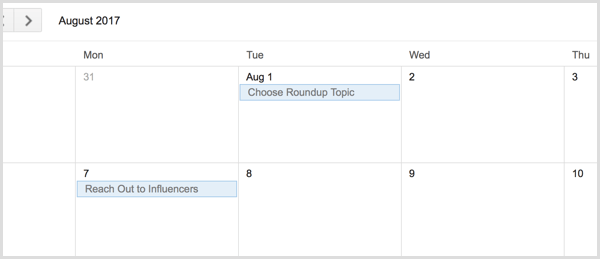
September 1: Send customized follow-ups rather than automated ones (people receive too many of them). Follow up on Twitter, Facebook (if you’re connected on Facebook), or seek common connections who can follow up for you.
September 15: Put the article together and break it into logical sections/subtopics based on the contributions. Find the most powerful short quote in each answer to highlight it as a tweetable quote, which will tag each influencer in the tweets.
September 20: Design visual quotes and charts and come up with original secondary content assets (infographics, SlideShare decks, etc.).
October 3: Add any final touches (in case some influencers took longer to send in their contributions) and publish the piece. Send an email to all of the participating influencers (with their visual quotes attached; a different one for each contributor), letting them know about the published piece and encouraging them to share it on social media and comment.
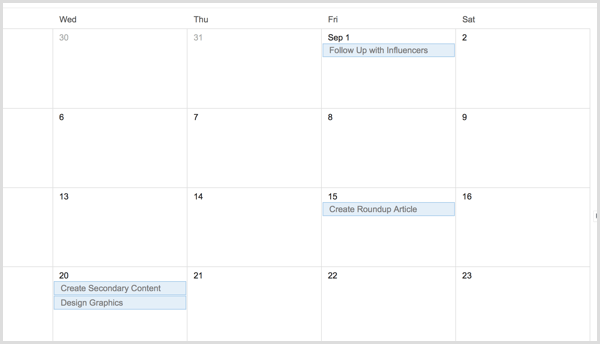
#2: Use Research to Identify a Popular Question
Your content roadmap will inform your topic. As with the earlier scenario, you might select a Thanksgiving-related topic and time it to the conference.
For an influencer roundup to be successful, you need to come up with a good core question that all of the contributors will be invited to elaborate on. This is where keyword research comes into play.
For instance, if you want to focus your roundup on just Thanksgiving, do keyword research around that topic in an effort to come up with an idea that meets the following criteria:
- It’s interesting enough for influencers to want to provide a lot of input.
- It hasn’t been covered a lot in the industry. You don’t want your article to be lost in the pile of other content that’s being published regularly.
- It’s in high demand (many people are looking for the answer), making it more likely to trigger a lot of shares and references.
Serpstat is a great tool to perform keyword research for your influencer roundup. You get the biggest selection of key phrases and it lets you filter and play with the results to find something interesting. It’s available in both free and paid plans, which start at $19/month.
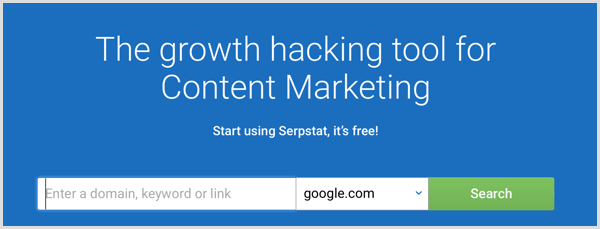
For a roundup, it’s helpful to enable the filter that forces queries triggering the People Also Ask box. You’ll get great insights into questions people ask on a particular topic.

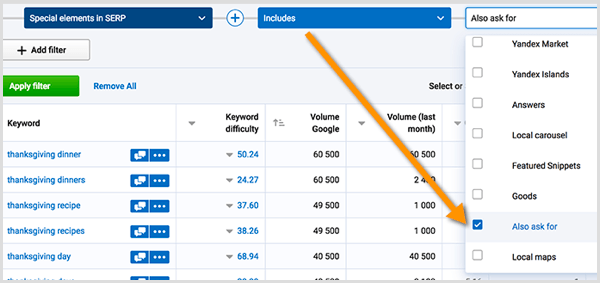
The image below shows Google’s People Also Ask box in action. You can see popular questions on many specific topics, which will help spark ideas for an interesting topic for your roundup.
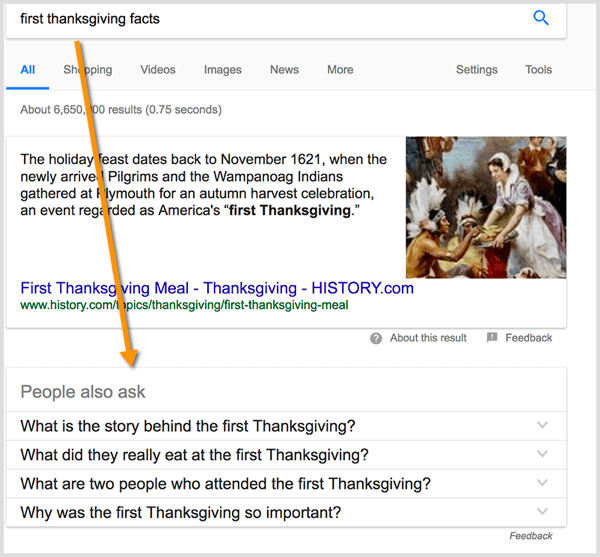
When you brainstorm your core question, keep these best practices in mind:
- Choose a question that can’t be answered with a yes or no. Also avoid questions that limit the contributors; your aim is to get detailed responses.
- The question should encourage influencers to share their personal experience because that’s the power of user-driven roundups: the collective sharing of authentic personal tips, case studies, stories, and more.
- Your question may include some specific recommendations (like “Please add your favorite tools, screenshots, etc.”).
#3: Turn Collected Insights Into an Article
After you’ve contacted your influencers and collected their responses, you’re ready to create your article.
Choose a Format for the Content
While a Q&A format is the easiest way to put your article together, it’s not the best way for readers to digest the information. Many roundups contain a lot of valuable insights, but they’re lost in an unreadable format and fail to trigger an action. As a result, readers walk away with no useful information and no plan to implement.
So instead of dividing your roundup into illogical subsections based on your influencers’ contributions, come up with useful headings and combine several answers under one subheading.
For example, this roundup is easy to read because the information is organized in problem/solution sections rather than simply as a list of contributions from experts.
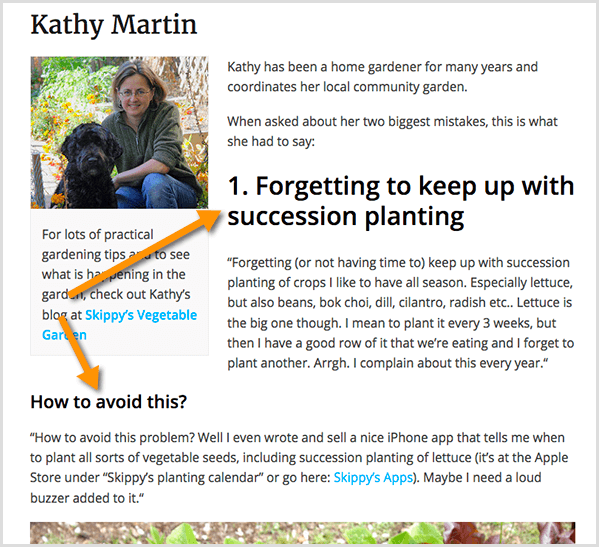
Offer Additional Ways to Consume the Content
Repurposing tactics can help you create diverse secondary assets to beautify your article and offer readers multiple options for consuming your content. Here are some examples:
- Put the whole roundup into audio and create a podcast episode.
- Turn those highlighted tweetable quotes into graphics and create a beautiful SlideShare deck with a tool like Haiku Deck. This SlideShare from TopRank Marketing is a great illustration of how to turn expert roundups into slideshows using clickable tweetable quotes on every slide:
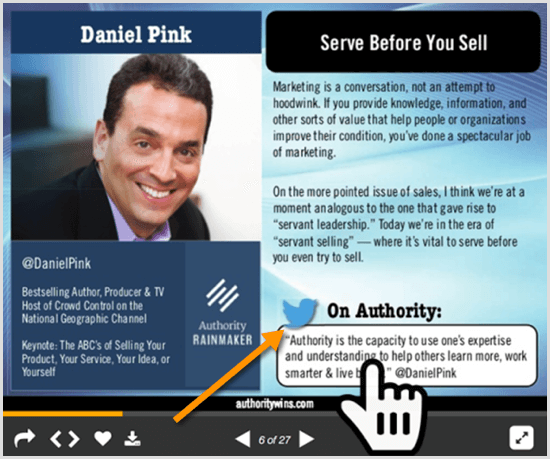
- Turn your interview into a PDF and create a mobile-friendly flipbook using a tool like Flipsnack. Flipbooks create a better mobile reading experience because viewers can zoom in and swipe through pages easier. Here’s a PDF white paper that was turned into a flipbook with Flipsnack:
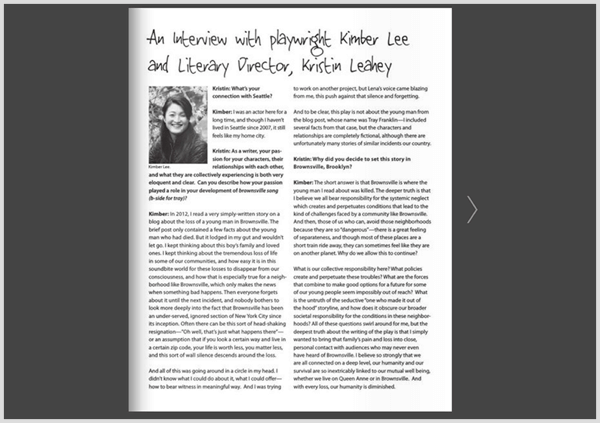
#4: Use Software to Develop Lasting Relationships With Influencers
One of the biggest mistakes that marketers make is focusing on the short-term benefits of a roundup. Influencer-driven content is well-known for its ability to bring a solid spike in traffic and social media shares. However, it’s not the biggest benefit of the tactic.
What really matter are the long-lasting relationships with the participating influencers. David Bain published a book based on the answers he collected from over 100 niche experts. He noted that “…many of those who took part have said to me, if I ever need anything, just ask. You can’t buy those sorts of connections.”
When you work on influencer-powered content, focus on the relationships you develop with industry influencers who will gladly help spread the word, participate in launching a new project, or contribute any time you need their help in the future. Influencer connections are among your biggest brand assets so they need to be treated as such.
To better organize your influencer outreach, you can use sales CRM software like Salesmate. Salesmate lets you record all of the contact details and notes for each influencer on a project basis, and then sync the data among the projects and team members.
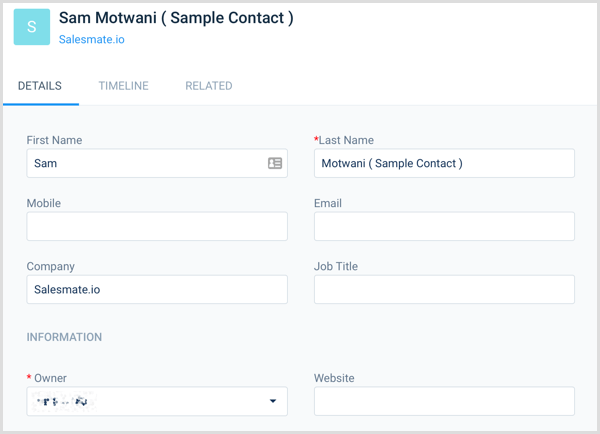
This information will give you a clear picture of:
- People you or your team collaborate with on a regular basis
- Which project/topic has worked best for particular influencers
- Which outreach email has performed best in terms of getting new influencers on board or engaging them in promoting the piece
With the pipeline view, you can also set steps and incentives for your team to reach out to influencers. Salesmate offers a free 15-day trial to test drive the product. After that, you can get continued access for $12/month per user (when billed annually).
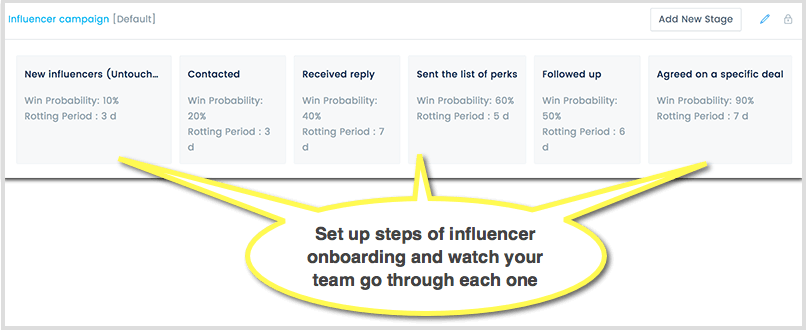
Conclusion
Influencer-driven roundups are a widely used marketing tactic but they’re so prevalent now that they’re slowly losing their vibe. Influencers are overwhelmed with requests to contribute and readers are getting tired of seeing yet another expert roundup.
Collaborating with industry influencers on creating content can still be effective if you take the time to do it well. You need to improve your influencer outreach process, time your roundup properly, come up with a unique topic idea, and brainstorm an original format.

What do you think? Do you do roundup posts? Which of the tactics above will you use? Please share your thoughts in the comments below.
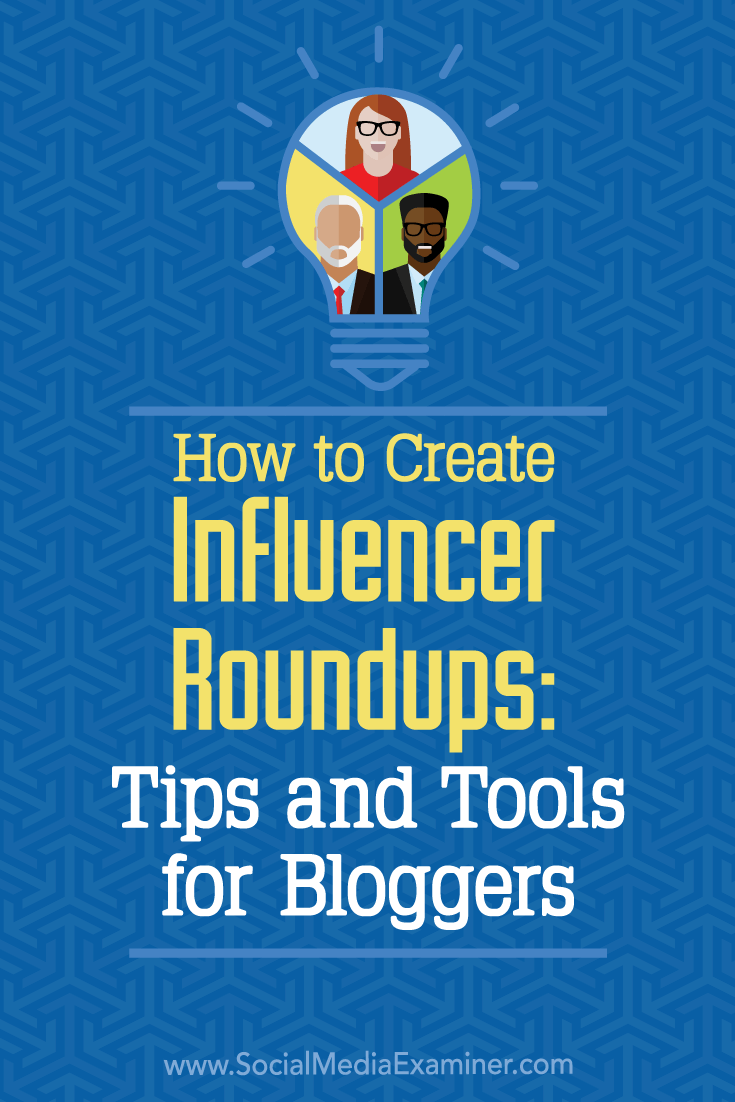
Read more source :
How to Create Influencer Roundups: Tips and Tools for Bloggers







0 comments:
Post a Comment